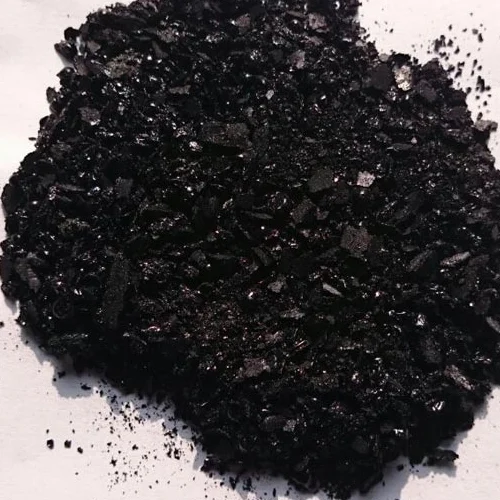Exploring the Art and Techniques of Indigo Dyeing Across Cultures
The Art and Science of Dyeing Indigo
Indigo dyeing is an ancient technique that has captivated artisans and fashion enthusiasts alike for centuries. The deep blue hue produced by the indigo plant has been used across cultures for textile dyeing, as well as for artistic expression. This unique process not only reflects the rich history of human creativity but also highlights the fascinating interplay between nature and science.
Historical Context
The use of indigo dates back over 6,000 years, with traces found in ancient Egypt, India, and Asia. The dye was derived from the leaves of the Indigofera plant, a member of the legume family. Historically, indigo was so prized that it became known as blue gold. It played a significant role in trade, shaping economic relationships between regions. The cultivation of indigo plants and the development of dyeing techniques contributed to cultural exchanges that shaped societies.
The Indigo Dyeing Process
The process of dyeing with indigo is intricate and requires a deep understanding of chemistry. Unlike other dyes, indigo is unique because it is insoluble in water. The dyeing process begins by fermenting the indigo leaves, which produces a compound called indican. During fermentation, indican is converted into indigo in a soluble form. This step involves a precise combination of water, temperature, and time, requiring careful monitoring from the dyer.
Once the indigo is ready, it is dissolved in a reduction vat, typically using an alkali and a reducing agent like sodium hydroxide. In this reduced state, the dye becomes soluble. The fabric, usually made from cotton or silk, is soaked in the vat, absorbing the dye. The key moment occurs when the fabric is removed and exposed to air, causing the dye to oxidize and turn a vibrant blue. Repeated dips can intensify the color, allowing artisans to achieve rich depths of hue.
Cultural Significance
dyeing indigo

Indigo dyeing is not just a technical craft; it also bears deep cultural significance. Different regions have developed unique methods and designs that embody their traditions. For instance, Japanese shibori techniques feature intricate tie-dye patterns, while West African indigo textiles often showcase bold geometric designs. In India, the art of block printing with indigo has produced stunning textiles that reflect the country’s rich heritage.
The symbolism of blue in various cultures adds another layer to the significance of indigo dyeing. In many societies, blue is associated with tranquility, stability, and trust—qualities that resonate through the textiles’ use in clothing and decor. This element of symbolism enriches the narratives woven into indigo-dyed fabrics, making each piece a story that connects wearers to their cultural roots.
Sustainable Practices
In recent years, there has been a resurgence of interest in natural dyes, including indigo, as a sustainable alternative to synthetic dyes. The fashion industry has recognized the environmental impact of conventional dyeing processes, which often use harsh chemicals and large amounts of water. In contrast, natural indigo dyeing promotes biodiversity and supports local artisans, offering a more sustainable approach.
Artisans are reviving traditional practices that emphasize ecological balance and the use of renewable resources. Many indigo producers grow their plants organically, avoiding pesticides and synthetic fertilizers. This not only enhances the quality of the dye but also preserves the environment.
Conclusion
Indigo dyeing is a beautiful fusion of art, science, and cultural heritage. Its enduring appeal stems from the distinct, striking blue it produces and the rich history behind the craft. As we continue to explore sustainable practices in textile production, indigo serves as a reminder of the deep connections between people, nature, and creativity. By embracing traditional techniques, we not only celebrate a time-honored craft but also pave the way for a more sustainable future in fashion.
-
The Timeless Art of Denim Indigo Dye
NewsJul.01,2025
-
The Rise of Sulfur Dyed Denim
NewsJul.01,2025
-
The Rich Revival of the Best Indigo Dye
NewsJul.01,2025
-
The Enduring Strength of Sulphur Black
NewsJul.01,2025
-
The Ancient Art of Chinese Indigo Dye
NewsJul.01,2025
-
Industry Power of Indigo
NewsJul.01,2025
-
Black Sulfur is Leading the Next Wave
NewsJul.01,2025

Sulphur Black
1.Name: sulphur black; Sulfur Black; Sulphur Black 1;
2.Structure formula:
3.Molecule formula: C6H4N2O5
4.CAS No.: 1326-82-5
5.HS code: 32041911
6.Product specification:Appearance:black phosphorus flakes; black liquid

Bromo Indigo; Vat Bromo-Indigo; C.I.Vat Blue 5
1.Name: Bromo indigo; Vat bromo-indigo; C.I.Vat blue 5;
2.Structure formula:
3.Molecule formula: C16H6Br4N2O2
4.CAS No.: 2475-31-2
5.HS code: 3204151000 6.Major usage and instruction: Be mainly used to dye cotton fabrics.

Indigo Blue Vat Blue
1.Name: indigo blue,vat blue 1,
2.Structure formula:
3.Molecule formula: C16H10N2O2
4.. CAS No.: 482-89-3
5.Molecule weight: 262.62
6.HS code: 3204151000
7.Major usage and instruction: Be mainly used to dye cotton fabrics.

